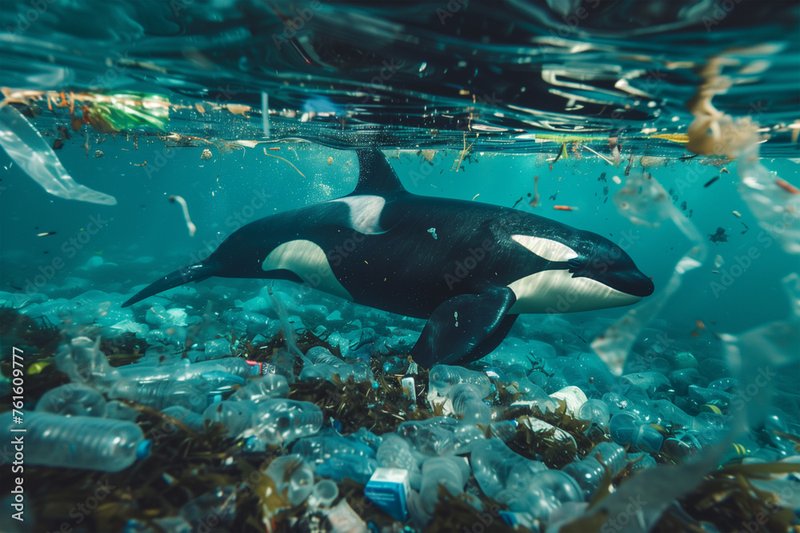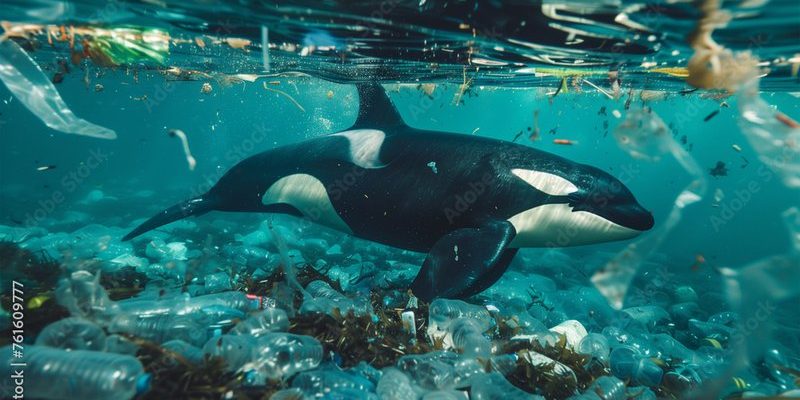
Orcas are more than just fascinating to watch; they are complex social animals that rely on healthy ecosystems to thrive. As climate change affects ocean temperatures, sea ice, and the availability of prey, these magnificent creatures face challenges that threaten their survival. Let’s dive deeper into how climate change impacts orcas, exploring the intertwined relationship between them and their delicate marine habitats.
Impact on Prey Availability
One of the most significant effects of climate change on orcas is the reduction of their food sources. Orcas primarily feast on fish, such as salmon, and marine mammals like seals. As ocean temperatures rise, these fish tend to migrate to cooler waters, which can lead to a scarcity of food for orcas. Here’s the thing: when prey becomes scarce, orcas must travel farther and expend more energy to find food. This can be especially tough for mothers trying to feed their young.
Additionally, warming waters can affect the spawning habits of salmon. For instance, Chinook salmon, a preferred prey of orcas, spawn in rivers and streams that are sensitive to temperature changes. As water becomes warmer, these fish may not be able to thrive in their traditional habitats, leading to a significant decline in their populations.
Changes in Habitat
You might be wondering how climate change alters orca habitats. Well, it’s not just about ocean temperatures. The melting of ice in polar regions impacts the entire ecosystem. As sea ice diminishes, the habitats of species like seals—key prey for orcas—are also threatened. Less ice means fewer places for these seals to breed and rest.
Furthermore, the loss of ice affects the health of other marine species in unpredictable ways. For example, as ice retreats, it allows for increased shipping traffic and industrial activities. This can lead to pollution and noise, which disrupts the orca’s communication and hunting. Since orcas rely heavily on echolocation to navigate and find food, increased noise pollution can throw a wrench in their hunting strategies.
Increased Toxicity in Oceans
Climate change is also contributing to more toxins entering the ocean. As the temperature rises, harmful algae blooms have become more common. These blooms can produce toxins that accumulate in fish, posing dangers to orcas that consume these contaminated prey. You may have heard of red tide events—these are just one example of how a changing climate can upset marine ecosystems.
Moreover, pollutants like plastics and heavy metals are becoming more concentrated in marine food webs due to changing ocean conditions. Orcas, being apex predators, are at the top of this food chain and are particularly vulnerable to these contaminants. This can lead to serious health issues, including weakened immune systems and reproductive challenges.
Social Structure Challenges
Orcas are known for their rich social structures and strong family bonds. However, the stresses caused by climate change can disrupt these dynamics. For example, when food is scarce, orca pods may need to split up to find sustenance, which can fracture these tight-knit social groups. This separation can have long-term impacts on their social cohesion and cultural transmission.
Orcas also communicate using complex vocalizations. Increased noise pollution from ships and industrial activities can drown out these sounds, making it harder for orcas to communicate and coordinate while hunting. Without their strong social networks, orcas might struggle more to survive in a changing environment.
Climate Change and Reproductive Health
Another crucial aspect to consider is how climate change affects the reproductive health of orcas. Rising ocean temperatures and increased pollution can lead to hormonal imbalances and reproductive challenges in marine mammals. For female orcas, this means that even when they are able to find food, they could still face hurdles when trying to successfully breed or raise their young.
The unpredictability of prey availability also adds stress during crucial breeding seasons. If mothers can’t find sufficient food to support themselves, they may not be able to produce healthy calves. This can lead to declining populations in already vulnerable orca species.
Conservation Efforts and Future Outlook
Despite these challenges, many organizations are working tirelessly to protect orcas and their habitats. Conservation efforts often focus on reducing pollution, establishing protected marine areas, and addressing climate change at its core. There’s hope, but it requires collective action from individuals, communities, and governments.
Education is also a vital part of these conservation efforts. By raising awareness about the challenges orcas face and the importance of clean oceans, we can rally support for initiatives that aim to mitigate the impacts of climate change. You don’t have to be a marine biologist to make a difference—simple actions like reducing plastic use and supporting sustainable seafood can contribute to healthier ocean ecosystems.
Climate change presents a complex set of challenges for orcas and their ocean environments. From the availability of food to changes in habitat and social dynamics, the impacts are far-reaching and troubling. We all play a role in the health of our oceans, and understanding these connections can empower us to take action. By supporting conservation efforts and advocating for sustainable practices, we can help protect these magnificent creatures and ensure that future generations experience the wonder of orcas in a thriving ocean. Let’s work together to create a future where orcas can flourish, just like those perfect, aromatic coffee beans at your favorite café.

